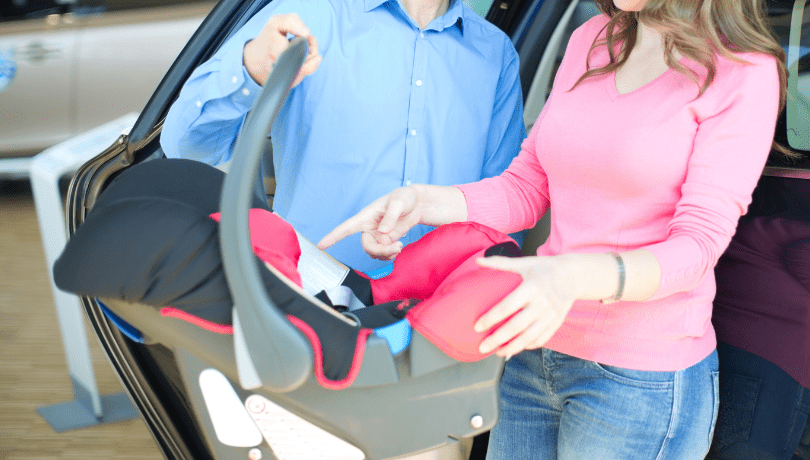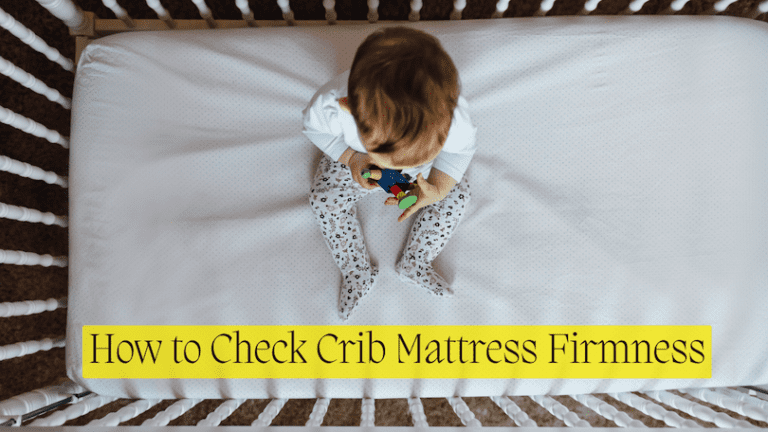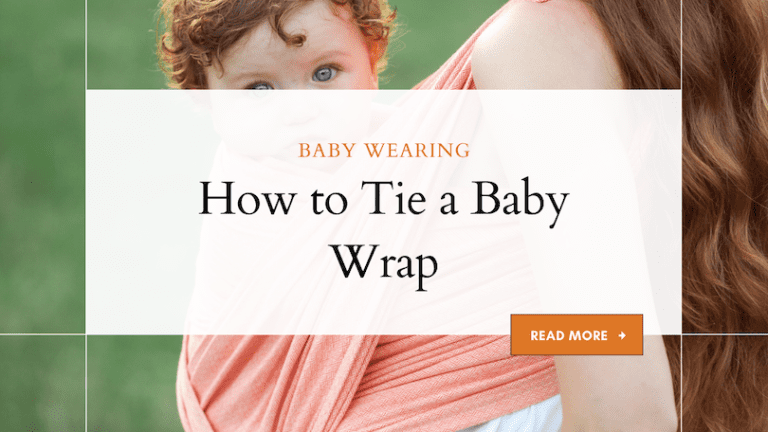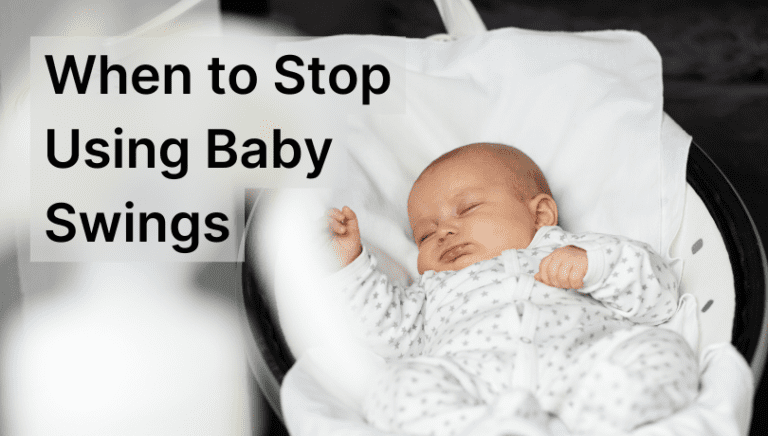Comprehensive Guide on How To Store Infant Car Seats
Parenting is an exciting and wonderful journey!
It has its ups and downs. But the one thing no one warns you about is how quickly babies can take over. Since babies quickly grow out of their clothes and baby gear, you’ll wind up with multiple bouncers, swings, and infant car seats.
And the organization can quickly become a nightmare. So, if you’re a new parent wondering how to store infant car seats, let me help.
After six children, I’ve had a lot of practice organizing things at home. Let’s dive in!
Table of Contents

How To Store Infant Car Seats: My 5-Step Routine
As our kids zoom past their milestones, the baby gear we relied heavily on in the past becomes unnecessary. But as a mom myself, reusing old baby gear was part of the routine. That’s why I learned quickly to store them safely. Here’s how I do it:
Useful Products To Store Your Car Seat Safely
Taking care of the infant car seat doesn’t end with cleaning or checking it for wear and tear.

If you want to save it for your next baby, wrap it well before storing it. Here are a few things that will help you to store it safely:
1. Moisture Wicking Bags
- Infant car seats are huge and can easily become a tripping hazard, so I totally get why most parents stow them in the attic, basement, or garage instead of cluttering the hallway or kitchen.
- But these spots can be damp and prone to molding. Hence, using a dehumidifier regularly or reusable moisture bags helps keep things dry and safe in storage.
2. Car Seat Storage Bag
- You might’ve seen these bags in airports; some parents use them to check car seats at the gate. While I always recommend flying with your car seats, these bags are also excellent for home storage.
- Use this as a first layer of protection when storing your infant car seat. You can then use its original box to pack it up properly.
3. Pest/Rodent Repellent Bags
- Even the cleanest homes can sometimes have a pest problem. Especially in basements and attics.
- But, if you still need to store the car seat in the attic, basement, or storage unit, keep rodent or pest-repellent pouches around the seat or between the car seat bag and the box.
4. Zipper Bags
- Lastly, to keep the owner’s manual, warranty card, and other important bits safe, put them in a zipper bag or pouch and store them inside the car seat bag.
- This way, you won’t accidentally toss them out during a cleaning spree – trust me, I’ve been there, and done that!
How to Carry An Infant Car Seat
With my kids, I’ve tried everything. I’ve kept the seat in the car, carrying my baby in and out, and I’ve also lugged the car seat around everywhere.
And I can tell you from experience that one technique isn’t better than the other. It depends on your personal preference and convenience.

But if you plan to lug the car seat around, opt for a lighter model or choose something with wheels! Here are a few techniques you can use to carry the seat around safely:
- Elbow Hook – It’s the classic move. Simply put your dominant hand through the car seat handle, and hook your elbow. The car seat will hang from your forearm. But it can be difficult to carry your little one like this if the seat itself is quite heavy.
- Two-handed Grip – Hold the car seat against your stomach with both hands if the elbow hook doesn’t work. Wrap your arms around the car seat and lift with your back. It distributes the weight more evenly, thus, making it easier to carry.
- Side-hold – Similar to the elbow hook, slide your hand through the handle and loop it around the side of the car seat. Depending on the model, you’ll find a knob or built-in latch to grab onto. Now, lift with your legs and readjust your grip once you’re up.
- Stroller Method – This is what I followed with most of our infant car seats. They’re usually compatible with travel systems or strollers. You can take it out of the base and snap it into the stroller.
Common Mistakes To Avoid While Carrying A Car Seat
I’ve seen so many parents struggle with carrying car seats, and it’s understandable. But some mistakes can easily be avoided.
- Bad Posture – Slouching in the car seat isn’t healthy for your little one, and slouching while carrying the seat isn’t good for you as a parent. Lift with your back and legs, depending on the technique, and maintain an upright posture.
- Overloading – Car seats are heavy enough, especially with your little one inside. So, skip the extra weight and avoid putting toys, bottles, or anything else inside. Keep it light and safe.
- Ignoring Safety – Whether you’re walking from your door to the car or the park, ignoring safety locks is the biggest mistake. Always double-check the locks in the car seat’s handle before lifting it. Safety first, always!
- One-Hand Hold – Carrying your baby in the car seat with just one hand can be risky, especially if your other hand is full. Keep another arm open and free to avoid accidents. It’s all about safety and balance.
How to Store Infant Car Seats: FAQs

1. Can I Store The Infant Car Seat In My Garage?
Technically, yes. But I wouldn’t recommend it.
I get it. Car seats can be humongous, which is why most people store them in their attic, garage, or storage unit.
But, I’d suggest that you don’t store them in such damp and humid places. I prefer closets or a space in the nursery.
Even keeping them in your outhouse or shed is a big no-no, since the stark temperature difference can cause mold or infestation.
2. How Long Is An Infant Car Seat Useful?
The expiration date is your best guide for how long you can use an infant car seat. It alerts you to potential wear and tear over time.
While all car seats in the US pass stringent crash tests, they aren’t made to last forever. Most are good for up to six years.
3. Can I Donate Or Sell My Used Infant Car Seat?
Yes! But before you donate, just make sure that it complies with the latest regulations. Also, it shouldn’t be expired, recalled, or have been in a crash.
Temperature changes and regular use can weaken the plastic, making it brittle. Therefore, many charities don’t accept donations for used car seats.
You can donate them personally or sell them among your friends and family if they’re in perfect condition.
Wrapping Up: Proper Care For Car Seats
Parenthood changes your life. Your home becomes a haven for baby clothes and baby gear. That’s why knowing how to store infant car seats and other baby devices is so critical.
Store your car seat properly if saving it for another child or passing it on to a friend or family member. Keep it in a dry, cool place, wrapped in a car seat bag and its original box. This locks out moisture, protecting it from mold and infestations.
And if you’re struggling with how to carry the infant car seat, remember the golden rule: safety first. Please ensure the handle is locked before lifting it – even if you’re just walking up to the car.
Take care of the little details and enjoy this phase.







